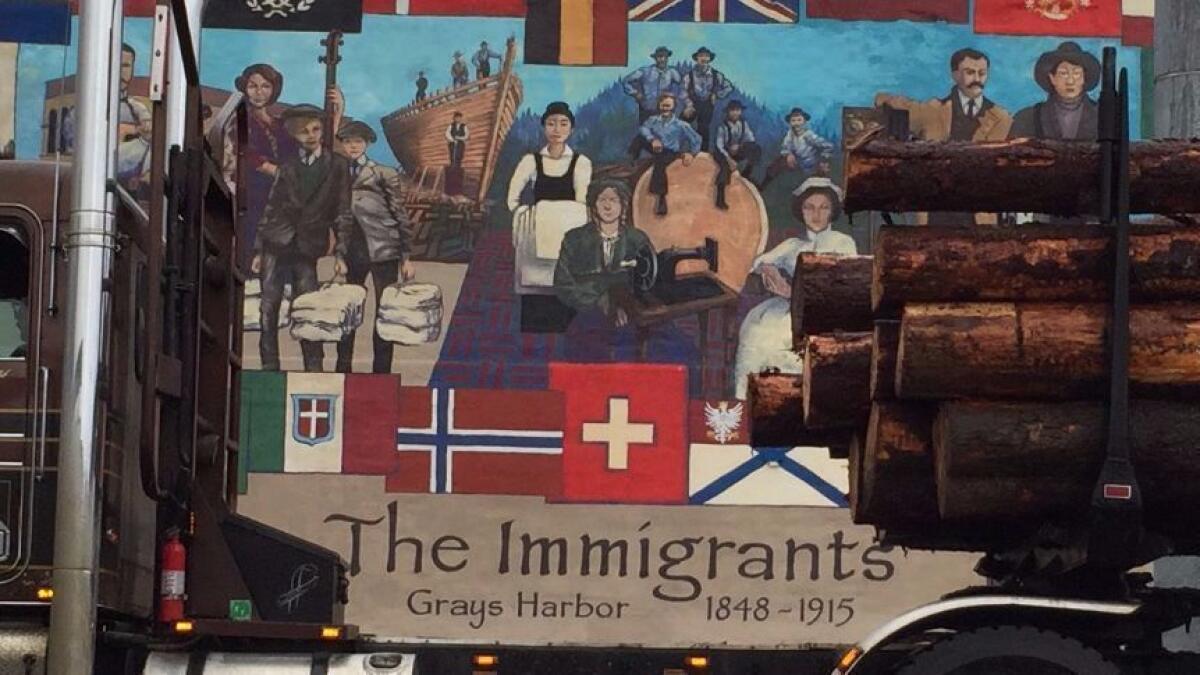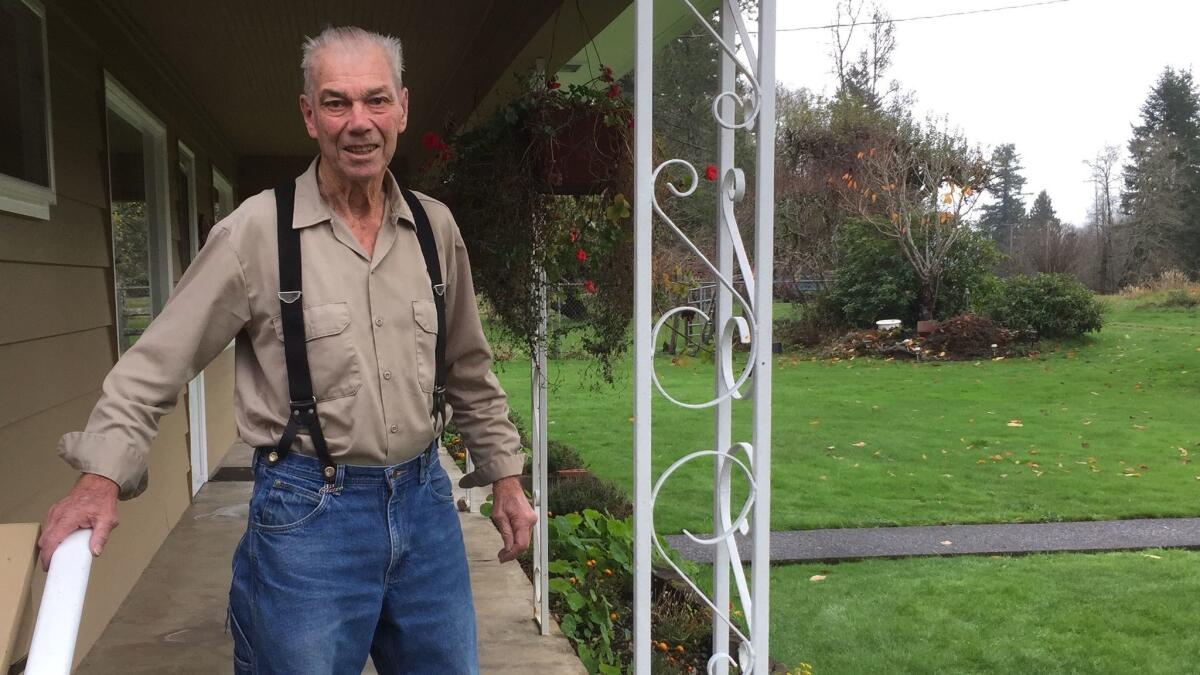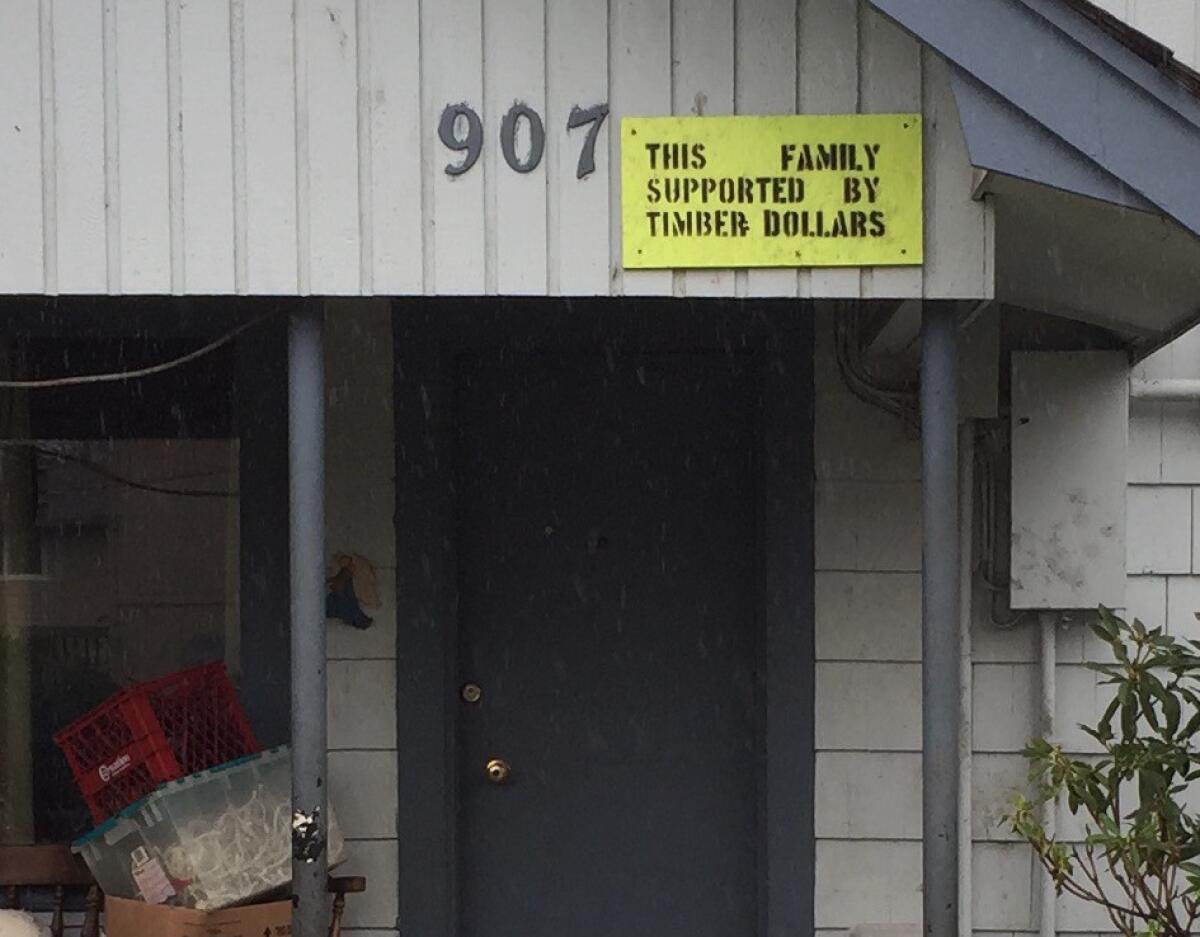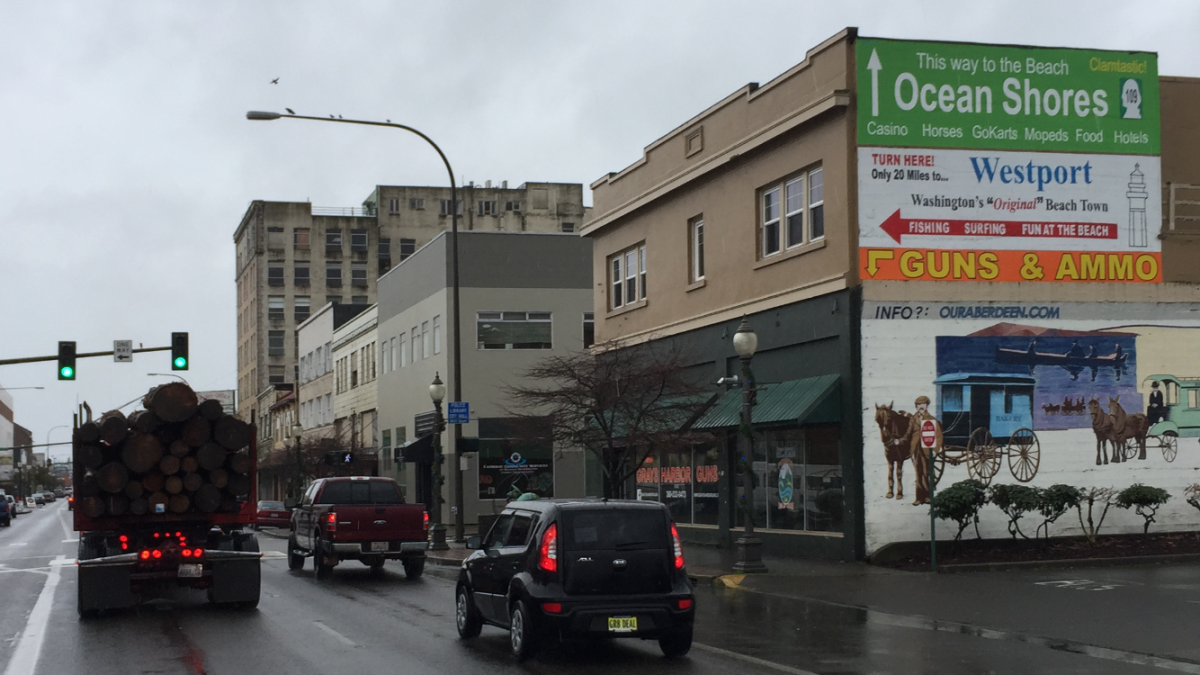This Northwest timber county hadnât voted GOP since Herbert Hoover. But times have changed

Reporting from Aberdeen, Wash. â Before coal became king and the Rust Belt rusted, the Pacific Northwest began building an economy based on timber. The Oregon Country shipped its first load of logs to China in 1833.
A century later, as national politics and the Great Depression intruded, this remote and rainy corner of the country became an early West Coast battleground for worker rights, with bitter strikes silencing lumber mills for months. It also became a stronghold for the Democratic Party, a place where immigrants and their children embraced President Franklin Rooseveltâs New Deal and his promise of solid wages for timber workers.
The region defied the Republican landslides that swept Eisenhower and Reagan into office in 1952 and 1980. It even stayed Democratic after Bill Clinton and later President Obama sharply reduced logging in old-growth forests to save an endangered bird, the northern spotted owl.
Then came 2016.
For the first time since Herbert Hoover won the White House in 1928, Aberdeen and the other small outposts that make up Grays Harbor County here on the Washington coast did not vote for a Democrat for president. This year, they chose Donald Trump.
âWe could sense that there was a change happening in the harbor,â said Steven Puvogel, who was chosen earlier this month as the new chairman of the Grays Harbor Democrats at their âreorganizationalâ meeting, which doubled as an election postmortem. âTrump signs were popping up everywhere, but I didnât see a Hillary sign until I put one up myself. They were hard to even get around here.â
Throughout the Northwest, from Washington to Northern California, historic timber-producing counties voted for Trump. Some had been Republican for years, while others had swung back and forth. Some, like Grays Harbor and its neighbor to the south, Pacific County, had not voted Republican in decades. (Pacific fell for Eisenhower in 1952 but quickly returned to the Democrats in 1956.)
And while they did not generate a single electoral vote for the president-elect, who lost by substantial statewide margins in Washington, Oregon and California, they did send a defiant message that coal country and the declining manufacturing core of the Midwest are not the only âoldâ economic regions where many working-class families feel that the Democratic Party has forgotten them and the role they played in building the country.
Can Trump restore the timber industry to its former glory? As with coal mining and manufacturing jobs, market forces create long odds. But he has helped revive a fierce political voice deep in the evergreens. If the vote for Trump here was striking in a historical context, it was not surprising given the loss of economic power the area has seen under Democrats.
âAll the jobs are in the cities now,â said Dale Rutherford, 91, who grew up in Pacific County and worked in the woods until he was 83. âI think people just wanted change.â

Southwest Washington once produced stunning amounts of lumber â for sailing ships in the 19th century, for the war effort in the 1940s and for the housing boom that followed. Timber harvest in Grays Harbor peaked in 1988 at nearly a billion board feet. Last year, more than two decades after the first logging restrictions imposed under President Clintonâs Northwest Forest Plan, Grays Harbor harvested just 252 million board feet.
Complicating things further, much of the timber harvested in Washington is now shipped to China and milled there, meaning fewer jobs in mills here. Washington had about 500 mills in the late 1960s. Now it has fewer than 100, and the most successful ones are becoming highly automated, requiring fewer employees.
The powerful employment engines at work in other parts of Washington state, companies like Microsoft and Amazon.com and Boeing, have no outposts here. Unemployment in Grays Harbor is more than 8%, more than twice what it is in the Seattle area. Household income last year was $44,000, unchanged from a decade ago.
To many people, the stage for political change has been set for a long time, and Trump was not its only beneficiary. Grays Harbor and Pacific also voted Republican in the governorâs race for the first time in decades, and a libertarian Republican, Jim Walsh, a book publisher who moved from Los Angeles with his family almost 15 years ago, narrowly won an open seat in the state house district that includes the county.
But the shift right was not necessarily inevitable.
This spring, U.S. Sen. Bernie Sanders trounced rival Hillary Clinton in the Democratic caucus in Grays Harbor and Pacific counties. Sanders, like Trump, talked about blue-collar workers being overlooked. He also was seen as holding more nuanced views on gun control, while Clinton was portrayed, inaccurately, as ready to repeal the 2nd Amendment in a region that likes to hunt and believes strongly in the right to bear arms.

âWhat was Secretary Clinton offering these existing timber workers?â said Brian Blake, a Democrat who has represented the area in the state Legislature since 2002 and was reelected by a wide margin in November. âIn the minds of these timber workers, the Northwest Forest Plan has been devastating. They donât see jobs in their communities, and they see a candidate saying we donât think you have a constitutional right to have a gun in your home.â
âAs a party, weâve got to craft strategies that speak to rural voters who are hurting,â added Blake, who spent a decade working in the timber industry. âWe canât just be scaring them, saying if Trump wins heâs going to take away the social programs that maintain you in poverty.â
One Trump supporter, a relief operator at the Sierra Pacific Industries mill here, said, âI donât even know how Democrats can go on with daily life sometimes.
âThey want everything given to them,â he added, declining to give his name for fear of putting his own job at risk. âThey donât want to work.â
The idea that Democrats do not want to work flies in the face of what made this place a political power in the 1930s. People demanded work back then â and many still remember what FDR did for them.
Blake, recalling campaigning door to door in his first race, said it was not uncommon to see framed pictures of Franklin Roosevelt in the entry halls of older residents.
âThereâs still an allegiance there,â Blake said. âBut those voters are getting older.â

Rutherford, the lifelong timber worker, said he did not expect his industry to grow in the future, in part because so much has been logged already. He said he, too, had been drawn to Trump, partly because the candidate talked about government making major new investments in infrastructure, roads and bridges.
Rutherford, whose wife of more than 50 years died a few months ago, recalled being a teenager in the late 1930s and early 1940s and having friends who worked for Rooseveltâs Civilian Conservation Corps, some in nearby Olympic National Park.
âI think theyâre going to have to do what President Roosevelt did,â he said, taking a break from writing Christmas cards in perfect cursive. âTheyâre going to have to make jobs.â
Twitter: @yardleyLAT
ALSO
Veterans came to North Dakota to protest a pipeline. But they also found healing and forgiveness
Jury in church massacre trial watches Dylann Roofâs confession: âWe all know Iâm guiltyâ
More to Read
Sign up for Essential California
The most important California stories and recommendations in your inbox every morning.
You may occasionally receive promotional content from the Los Angeles Times.











